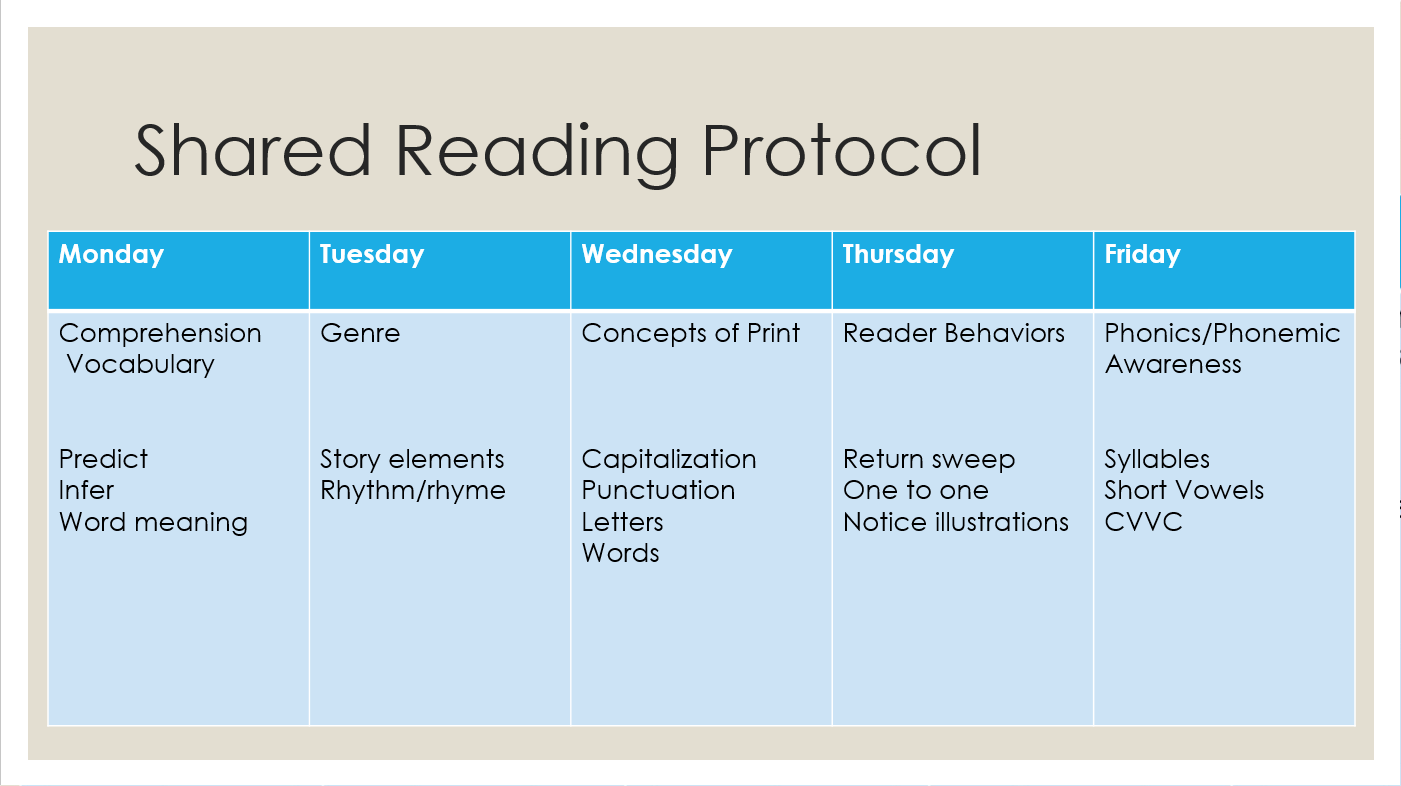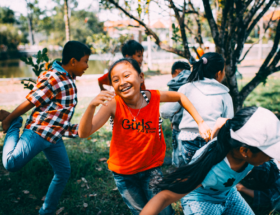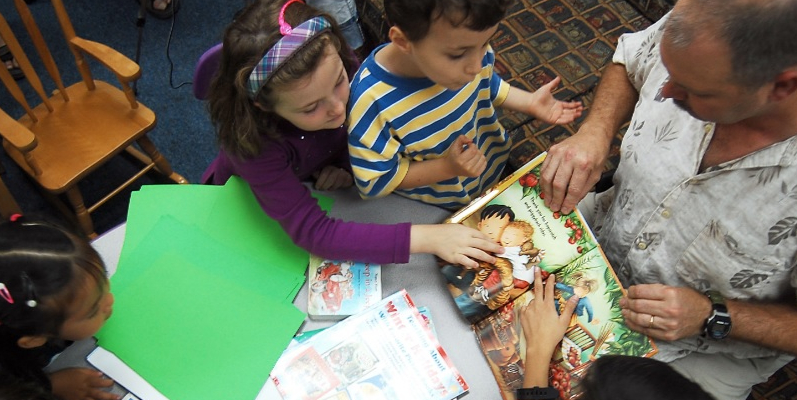Many a parent or guardian has experienced it.
The repeated demands from a tiny tyrant to read a beloved book. Beloved by the child. Most likely not so beloved by the adult—after having read it a bazillion times.
That one practice alone (repeatedly reading the same book over and over again) does more to promote early literacy skills in emerging readers than almost any other reading routine. In homes around the world, it’s known as “reading to your child”. In the classroom, it’s known as shared reading.
What is It?
Shared Reading is a literacy practice that involves students joining in the reading of complex texts while being mentored by their teacher. The teacher engages in this simulation of “lap reading” or “bedtime story reading” in order to model specific behaviors of a proficient reader (Holdaway, 1979). The teacher may choose to model fluency moves, decoding strategies, tricks for determining meaning of new vocabulary through context, ways of finding oneself in the text through connections or understanding how readers work to comprehend. Shared reading texts are most often big books, poems on charts, song lyrics, excerpts from books or stories projected onto an interactive board.
Burkins and Yaris in their book, Who’s Doing the Work? How to Say Less So Readers Can Do More:
Like read aloud, shared reading offers delightful opportunities for building a reading community and for teaching children to think about how reading works. Shared reading combines the auditory engagement factors of the teacher reading aloud, the visual engagement factors of following along in the text, the emotional pull of an excellent text, and the cognitive lure of productive effort. Shared reading presents one of the richest and most inviting opportunities to offer students guided practice in increasingly difficult texts.
Shared reading helps readers to learn the habits needed to master increasingly complex texts. Left to themselves, with little or no consistent, daily, shared practice, students reading below level struggle to gain skills to close the gap and move easily into the next reading level.
Why Do It?
Shared reading is the perfect interface between the read aloud and the new moves children try out under the watchful eye of their teacher during guided reading and the “all on my own” reading they engage in during independent reading.
Shared reading:
- Builds a love of texts in a variety of genres and forms
- Shows readers how to conquer complex texts
- Provides kids with a growing repertoire of fix up strategies at the word level and beyond
- Empowers students to figure out unknown or new vocabulary
- Develops fluency
- Introduces readers to compelling content
How to Do It
Choose an engaging text and based on standards, determine the one teaching point for each day’s shared reading session. The text should be large enough that all students can see it or each student needs their own copy along with the same text projected on the board. The teacher should be able to mark on parts of the text as instruction is delivered and reading moves are modeled.
A fairly consistent protocol should be used with shared reading. Kids should know and anticipate each day’s focus lesson with the same text revisited daily throughout the entire week. The daily protocol may have slight changes based on the genre or form.

Daunis and Iams in their book, Text Savvy, share Georgia Heard’s poetry immersion model. Heard encourages teachers to expose students to the same poem for an entire week with her Poem of the Week Structure
Day One: Teacher reads the poem and students discuss its meaning.
Day Two: The poem is read again and students draw images that come to mind as they read.
Day Three: Students act out the poem.
Day Four: The teacher and students analyze the poem on a deeper level as they work to make personal connections.
Day Five: Students and teacher share additional thoughts and wonderings about the poem.
I followed a similar shared poetry protocol when I taught kindergarten and first grade. On our final day of the week, students received a paper copy that was added to their poetry folder. That folder was a part of their book box from which they read during independent reading. By the end of the week, with all the repeated readings, students were able to independently read the poem.
That’s powerful stuff, y’all.
Giving kids the gift of being able to read a text that is ordinarily out of their reach, with the strong teacher support through scaffolded instruction, shared reading provides them with skills they need to read more difficult texts.
Shared reading is just one of many components in a Balanced Literacy Framework. It is undoubtedly one of the most vital components and should be a high priority in every classroom.
Without shared reading, students miss out on the opportunity to observe and to transfer the all-important processes readers use to understand text and to make meaning.










